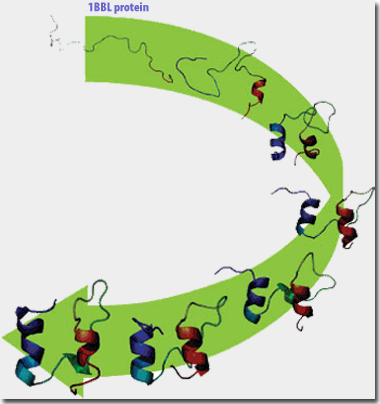Postdoc offers new model for molecular dynamics theory
A Lab postdoc has come up with a complete theory to model how force can assist a molecule to change from one configuration to another.
To date, two well-known but very different theories have been used to model this procedure, which has caused some debate as to which theory should be used.
However, Raymond Friddle, of the Biosciences and Biotechnology Division of the Chemistry, Materials, Earth & Life Sciences Directorate, describes the first complete theory that is valid in general cases of forcing a molecule to switch states.
The structure of molecular-scale objects is not fixed, but instead is constantly shaken up by the vibrations of thermal energy. Given enough time, a small object will spontaneously switch from one design to another, with each switch occurring randomly.
This transition time is based on a number of normally hidden variables, which describe the microscopic properties of the object and its interaction with its surroundings. But this typically inaccessible information can be determined through experiments that force the transition and record what level of force induces the switch (such as the force to mechanically break the bond between an antibody and its target).
Friddle first defined the complete force spectrum, which is the average force required to drive a system from one state to another, as a function of how fast the force is increased.
"A common example is the rupture of a bond between two molecules," Friddle said. "Pulling them apart quickly will produce a large force on average, whereas breaking them slowly will produce a small average force. And the complete force spectrum is the whole range of rupture forces possible for any pulling speed."
With this new model, scientists can learn fundamental information from a variety of
experiments, such as rupturing a chemical bond or switching the orientation of a magnetic domain and comparing the model to the experimental data.
The two previous models were not accurate for all loading rates, but instead one model was accurate at slow forcing rates and the other at large forcing rates.
"Deciding which model to use in the laboratory was cumbersome," Friddle said. "So a model that is accurate at arbitrary conditions was really needed. This is the first complete model of its kind that actually unifies the two earlier theories into a complete theory."
Friddle said the new model is an excellent tool to study microscopic states of single molecules because scientists are always finding new ways to directly manipulate these states by force.
The research appears in the April 4 issue of Physical Review Letters .






